How Many Minds Can Henry James Cram in a Single Paragraph?
‘The Ambassadors’ and the Neuroscience of Novels
The human mind is a marvel. Though sealed within the skull, it reaches far beyond, sensing what it can and imagining what it cannot.
At any given moment our minds run silent simulations of the world around us. What will happen if . . . ? We’re constantly projecting possibilities, drawing on memory and intuition to gauge reality and guess what might unfold next.
But we’re not merely minds in a world of things. We’re minds in a world of other minds, roughly eight billion of them—if you only count other humans. That means we invest gobs of energy modeling not just the world, but the thoughts and feelings of people around us. Whether for work, play, or sheer survival, we’re always guessing what others think.
Cognitive scientists, psychologists, and other gray-matter specialists refer to this exercise as theory of mind, ToM for short, defined as the capacity to think about others’ mental states. But they’re not the only folks who play with the phenomenon. Naturally, it ends up in our stories; in some cases it’s the whole story.
Novelists are pros with theory of mind, and I give you, as an example, Henry James and his 1903 novel The Ambassadors.
How High Can You Climb?
Before we jump into The Ambassadors, we need to lay a bit more groundwork. Our ability to imagine other people’s mental states becomes increasingly complex as we multiply relationships or nest inferences within them. Verbs like think, know, believe, guess, understand, assume, imagine, and so on all signal theory of mind when applied to others—especially when layered recursively: what someone thinks about what someone else thinks about what another person thinks, and so on. For example,
I think ➝ you know ➝ she imagines ➝ he assumes ➝ they doubt.This gets real slippery real fast, so let’s make it as sticky as possible. And let me hasten to add: I’m no expert. This is my layman’s attempt to explain what’s going on, based on my nonspecialist’s understanding. I’m so far out over my skis, I don’t even know. But, having shoved all that caution out of the way . . .
First-order ToM involves recognizing that someone else has a mental state separate from your own. For example: “I think Sally believes chocolate beats vanilla.”
Second-order ToM means understanding that one person has beliefs about another person’s beliefs: “I think John believes that Sally thinks chocolate sends vanilla home crying.” You’re now stacking minds—your belief about his belief about hers. This also includes reflexive loops, like: “I think John believes that I believe chocolate mops the floor with vanilla.”
Third-order ToM adds yet another layer: “I think Lisa believes that John believes chocolate pushes vanilla down the stairs and critiques the landing,” or “I think Lisa believes that John believes that I believe chocolate takes vanilla in a street brawl.” You’re modeling what someone believes about what someone else believes—possibly about you.
Fourth-order ToM stacks the recursion four minds high: “I think Lisa believes that John believes that Sally believes chocolate jumps vanilla in an alley with a tire iron,” or, “I think Lisa believes that John believes that Sally believes that I believe chocolate buries vanilla and collects the insurance money.”
We engage in this sort of recursive modeling all the time, usually without realizing it. Each new level of mental-state attribution—thinking about what someone thinks about what someone else thinks—adds another order, fifth-, sixth-, and so on, though most of us rarely clamber above the third or fourth tiers in daily life.
“It is difficult to overestimate the importance to the human species of ToM,” says science writer Leonard Mlodinow. “We take the operation of our societies for granted, but many of our activities in everyday life are possible only as a result of group efforts.” Such cooperation requires us to constantly imagine what others are thinking. “It is ToM that enables us to form the large and sophisticated social systems . . . upon which our world is based.”
Mlodinow points out that novelists by default demonstrate higher levels of ToM because they have to make assumptions about what their characters are assuming about other characters as all those beliefs—some real, many bogus—ricochet around the imaginary social worlds they’ve conjured on the page.
Some novelists are masters of the art, which brings us back to Henry James and The Ambassadors—an exhaustive (and—warning—for some possibly exhausting) exploration of theory of mind. James’s narrative style is a literary form of ToM all by itself. And what’s more, he trains his readers to engage in recursive thought about thought . . . about thought . . . about thought . . . about. . . .
You’ll pardon me if we drop that for now and lay out the basic story.
Man on a Mission
Lambert Strether is a mild and mellow middle-aged literary editor from Woollett, Massachusetts. So, what’s he doing in Paris? The wealthy widow Mrs. Newsome has dispatched him on a vital mission: to retrieve her wayward son, Chad. The young heir has not only ducked his responsibility to the family but also—gasp!—fallen for a fallen woman of the French persuasion.
Mrs. Newsome wants Chad back in America to run the family business and marry his family’s intended match, one Mamie Pocock, sister-in-law of Mrs. Newsome’s daughter Sarah Pocock. And Strether? He’s also hoping for marriage. He’s got his eye on the well-provisioned Mrs. Newsome and figures he’ll cinch the deal if he proves helpful in this tricky situation. If he fails, he can pretty much kiss the nuptials goodbye, along with a life of comfort and ease that comes with the good widow’s fortune.
To serve his mission, upon arrival Strether enlists the aid of the lovely and sophisticated Maria Gostrey. She becomes his Virgil and Beatrice to the baroque workings of European life. Other assistants swing into his orbit as well: Waymarsh, an old friend from back home, and “little Bilham,” a friend of Chad’s.
But nothing can prepare Strether for what he actually encounters. Instead of finding Chad aimless and dissolute, Strether discovers a mature, polished young man at ease in the world, unconcerned with the petty affairs of everyone hyperventilating back in Woollett.
The scandalous Frenchwoman also seems possibly less scandalous than originally assumed. Madame de Vionnet, a beautiful comtesse separated from her husband, has embraced Chad, but it’s not entirely clear whether this affection is romantic or merely maternal, the comtesse simply viewing Chad as a suitable match for her barely eligible daughter, Jeanne de Vionnet. Which is it?
As you might guess, theory of mind comes into play as Strether navigates the complexities of Parisian life and the intricacies of these and other relationships—not only among the parties already mentioned but others besides.
The more of this world Strether imbibes, the more his sympathies turn toward Chad. Under the influence of Gostrey, Bilham, and the comtesse he begins to wonder: Why, exactly, should Chad bother going back to Woollett? To counteract this waffling and save the mission Mrs. Newsome dispatches the Pococks, not only Mamie and Sarah, but also her son-in-law Jim. Who thinks what about whichever quickly descends into a tangled web of assumption and guesswork that would ensnare the nimblest of minds.
Naturally, James doesn’t label these attempts at divining others’ mental states, motivations, hopes, and intentions with escalating tiers of ToM. Why would he? (And for that matter, how could he? While the concept goes far back, the term “theory of mind” didn’t really hit until the late 1970s.) But James was a master of social cognition nonetheless, and it’s all on display in these interlocking relationships. To trace Strether’s transformation, we can climb the ToM ladder by ourselves—rung by increasingly precarious rung.
1st-Order ToM
At the outset, Strether operates primarily with 1st-order ToM, focusing on what individuals directly want or feel. His initial mission, for example, is driven by Mrs. Newsome’s clear objective to bring Chad home from Paris. He knows Mrs. Newsome frets about Chad’s life and that she wants him to return to the family business. As he later explains to the prodigal Chad, Mrs. Newsome’s heart is “passionately set upon it.”
Likewise, when he first meets the charming Maria Gostrey, Strether instantly realizes he’s in the presence of someone more socially astute and agile than anyone back home in Woollett and immediately entrusts himself to her judgments. He thinks he knows what she knows.
Then there’s poor old Waymarsh, who doesn’t have to utter a complaint for Strether to observe his “joyless” demeanor and recognize he dislikes Europe. Strether sees Waymarsh as “almost wilfully uncomfortable” and notes he “could have floated easily had he only consented to float.” Strether can practically read his mind. But can he keep it up the further extended he gets?
2nd-Order ToM
As Strether delves deeper, his ToM rises higher. He begins to consider what others know or believe about a third party’s mental state, as when Strether becomes conscious of how Waymarsh (and others) perceive his own behavior—especially as he begins to waffle in his mission. Strether understands that Waymarsh knows how Strether feels about Paris and assumes the experience is compromising Strether’s mission, maybe even his identity.
Another example tied to the ambiguity of Chad’s relationship with Madame de Vionnet: Strether suspects that she’s intentionally working to keep their visible relationship above reproach. Her effort at PR suggests she hopes to control Strether’s perception of the relationship. That is, Strether makes conjecture about her conjecture—which is about his conjecture so that might technically qualify as 3rd-order theory of mind. The pros will have to weigh in.
3rd-Order ToM
One humorous element to the story is that most of the plot involves not action but increasingly precarious predictions about people’s beliefs. It’s all head games. To help everyone follow along, I’ll start using parentheticals to show the ToM ladder ascending.
When Strether meets Chad in Paris, he is impressed by what he sees but struggles to get clear answers about his supposedly scandalous romance. Is he with a woman? “One is when one isn’t,” Chad says. “One isn’t when one is. And then one can’t quite give people away.” This is all gamesmanship. Strether (1) believes Chad (2) wants Strether (3) to believe Chad is being polite and respectable, thoroughly honorable.
The scene is so ambiguous, we might even construe it as 4th-order ToM if we toss Mom in the mix—that is, Strether (1) realizes Chad (2) is playing coy because Chad thinks Strether (3) will report the scandal back to Mrs. Newsome (4), and goodness knows what she’ll think. But let’s not get ahead of ourselves.
An early turning point for Strether involves turning theory of mind on himself. After getting his mail one day, he finds himself in a retrospective mood and takes a stroll. Sitting in the Luxembourg Gardens, Strether realizes he has “put his foot in it.” He (1) reflects on his naive, earlier self’s (2) assumptions and how they caused him (3) to misconstrue the truth of his mission and, more importantly, himself.
This moment is tightly connected to a later scene when this mustard seed of insight blossoms into a full-blown bush. Strether spills his guts to little Bilham while sitting in another garden. Telling the young man to eschew self-doubt, he urges him to “Live all you can; it’s a mistake not to. It doesn’t so much matter what you do in particular, so long as you have your life. If you haven’t had that what have you had?”
Strether sees himself as too old to follow suit. He’s held back again and again, regrets the choice, and wants to save Bilham the same fate:
The right time is any time that one is still so lucky as to have. You’ve plenty; that’s the great thing; you’re, as I say, damn you, so happily and hatefully young. Don’t at any rate miss things out of stupidity. Of course I don’t take you for a fool, or I shouldn’t be addressing you thus awfully. Do what you like so long as you don’t make my mistake.
Here we see Strether (1) hoping Bilham (2) understands that Strether (3) regrets his choices. “For it was a mistake. Live!” The two scenes employ theory of mind in Strether’s personal growth and his ability to inspire another’s.
4th-Order ToM
As you’ll recall, 4th-order ToM involves a chain of four people’s mental states. This is not as complicated as it can get, but we’re edging toward precarious territory here.
For instance, Strether (1) assumes Mrs. Newsome (2) believes that Chad (3) knows Madame de Vionnet (4) wants to marry her daughter Jeanne to Chad. But something is up, because Chad (1) wants Strether (2) to believe that Madame de Vionnet (3) wants everyone else (4) to assume she and Chad are only friends, which is—ahem—not true. How do we know this? Because Strether guesses as much, which actually makes this string of inferences 5th-order ToM, and we’re suddenly getting ahead of ourselves again.
As you might imagine, maintaining this level of misdirection proves rather difficult. At one point, Strether updates Mrs. Newsome by letter of Chad’s state of affairs—that he’s not wallowing in immorality as assumed and in fact is quite respectable, that Paris has actually done him good despite all fears to the contrary. He anticipates “Mrs. Newsome report[ing], in capitals almost of newspaper size, to Mrs. Pocock” and anticipates Sarah Pocock’s “full skepticism” in response. Strether (1) thinks Mrs. Newsome (2) will share his letter with Sarah, who (3) will reject Strether’s (4) belief about Chad’s transformation. Reasonably enough, I might add.
But now we’re approaching James’s real high-wire act of complicated social cognition, and I’m going to leapfrog over 5th-order examples to—gird thy loins, my friends—6th-order ToM.
6th-Order ToM(!)
Strether eventually uncovers the true nature of Chad and Madame de Vionnet’s relationship. Daughter Jeanne was just a dodge, readily confirmed when Strether stumbles upon an intimate moment between Chad and the comtesse.
By now, Strether’s undergone a transformation of his own. As we’ve seen, he’s come to regret his own misjudgments and lack of initiative. He now wants no part in breaking the lovers up, only wishing there could be a less complicated and dishonest way for them to proceed together.
Instead of urging Chad back to Woollett, Strether breaks with his mission and encourages him to stay in Paris. His commitment to the pair occurs with Strether (1) knowing Waymarsh (2) assumes Mrs. Newsome (3) wants Strether (4) to return to Woollett and abandon his newfound Parisian connections (5), assuming Strether (6) still desires Mrs. Newsome’s hand in marriage and will act accordingly.
Nope.
As he counsels Chad, Strether (1) knows that Chad (2) thinks Mrs. Newsome (3) believes Strether (4) still takes her (5) authority and approval seriously enough to convince Chad (6) to return home. We can visualize the layers like this:
Strether
└─ knows Chad
└─ thinks Mrs. Newsome
└─ believes Strether
└─ values Mrs. Newsome’s authority/approval
└─ and will change Chad’s courseBut Strether opts out. He defies all expectations, forfeits the happiness he once desired, and leaves Europe with radically revised convictions about how he wants to conduct the second half of his life, not only asserting his own freedom and dignity but granting the same to Chad.
Will others understand his decision? Of course not, and he doesn’t care. “I’m true, but I’m incredible,” Strether tells Chad. “I’m fantastic and ridiculous—I don’t explain myself even to myself. How can they then . . . understand me? So I don’t quarrel with them.”
And what of the lovely Maria Gostrey? Will Strether end up with his Beatrice? What would you guess?
That’s the fun of The Ambassadors, which to be honest I found not inherently fun at all. (My own deficiency, I admit.) The joy was realizing what James was up to and then plotting these inferences from passage to passage. The social complexity of James’s world astonished me. But the entire scheme rings true. Whether in novels or real life, we’re navigating such mental mazes every day, and James makes an expert Virgil for the rest of us.
Thanks for reading! If you enjoyed this post, please hit the ❤️ below and share it with a friend. Or an enemy. I don’t discriminate!
And! More remarkable reading is on its way. Don’t miss out. Subscribe for free today.
While you’re here, check out my review of Henry James’s The Turn of the Screw.


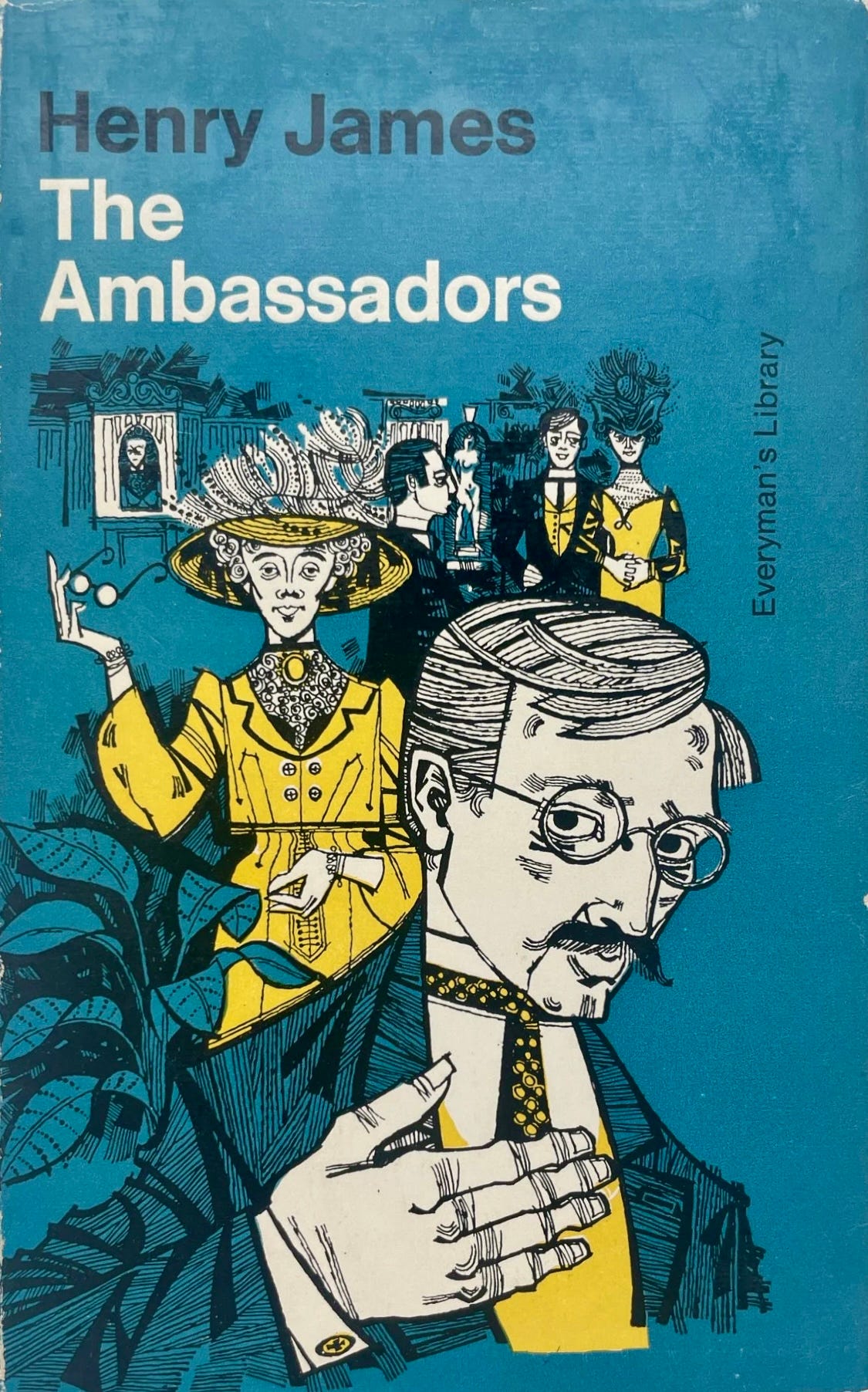
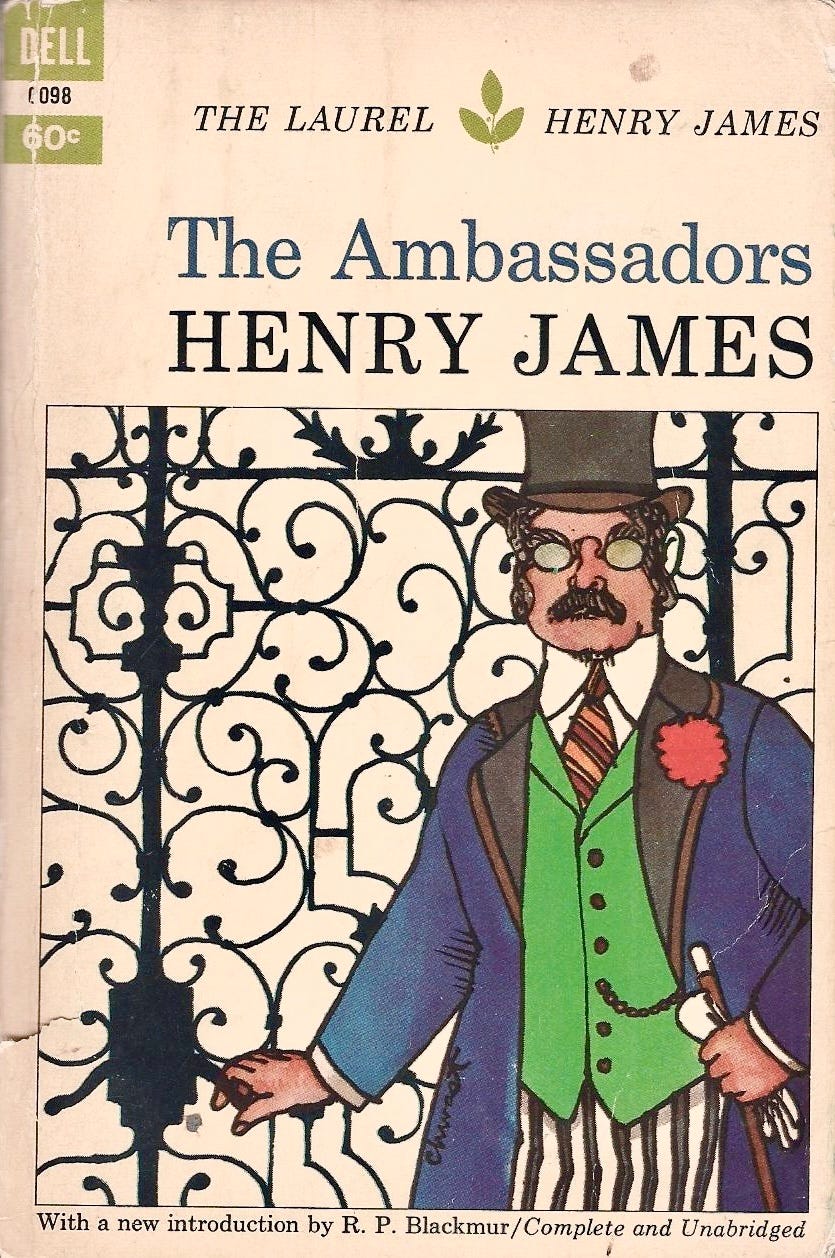
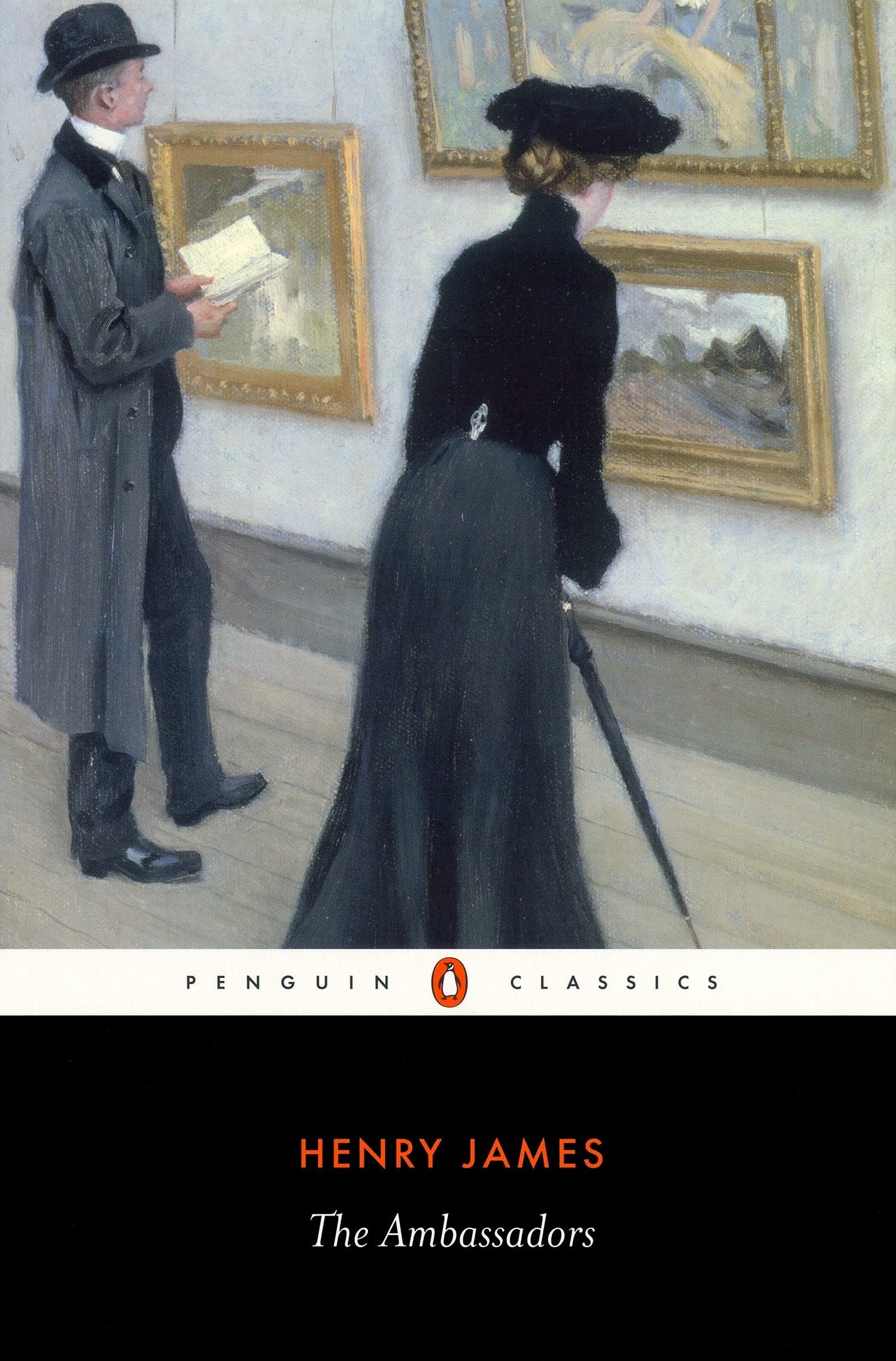
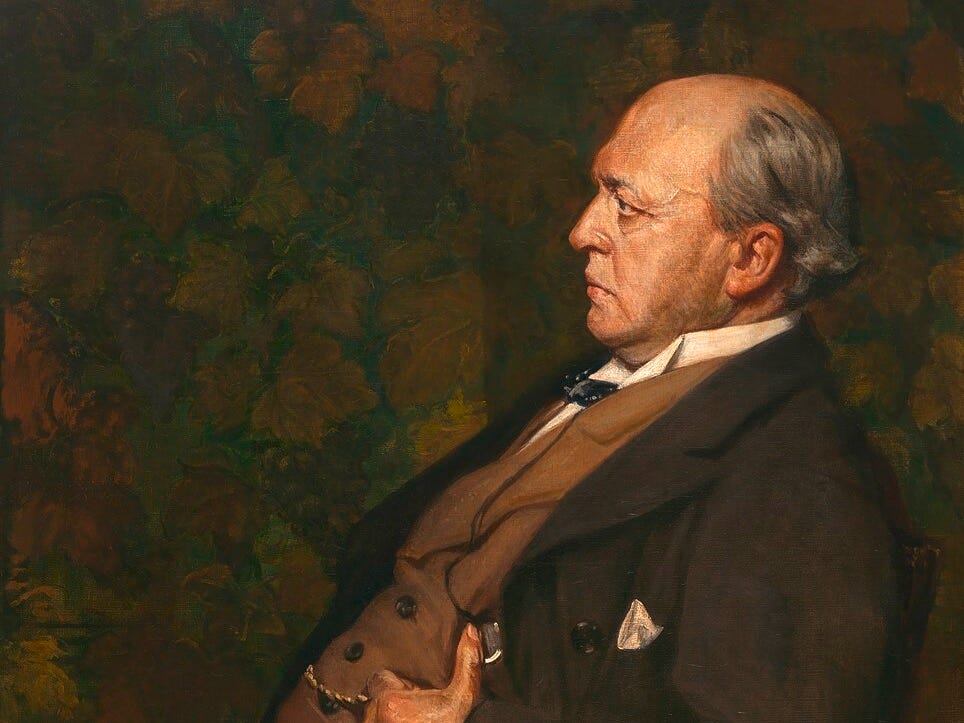
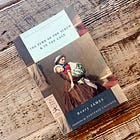
Wow. What a fascinating analysis of a difficult book. (1) I believe (2) you really understand what (3) James was trying to convey.
I loved this piece, especially your clear explication of the plot of “The Ambassador,” a book i’ve tussled with for many a year. It occurred to me that the ToM idea could be applied to many (most? all?) mystery novels too. I haven’t thoroughly worked this idea out but I think there’s something to the notion!